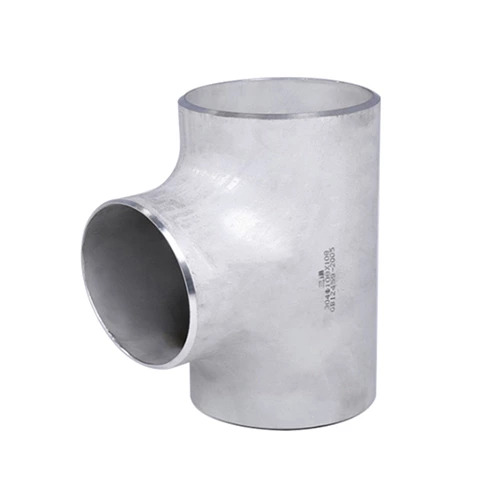Process Characteristics Of Stainless Steel Tees And Stamping Pipe Fittings
Here is a detailed description of the process characteristics of stainless steel tees and stamping pipe fittings:
1. Stamping can produce parts with a large size range and complex shapes, such as stopwatches as small as clocks, longitudinal beams of automobiles, covers, etc., plus the cold deformation hardening effect of the material during stamping, the strength and rigidity of the stamping are relatively good.
2. During stamping, the mold guarantees the size and shape accuracy of the stamped parts, and generally does not damage the surface quality of the stamped parts. The life of the mold is generally longer, so the quality of the stamping is stable, the interchangeability is good, and it has the characteristics of "exactly the same".
3. Stamping generally does not generate chips and fragments, the material consumption is less, and no other heating equipment is required. Therefore, it is a material-saving and energy-saving processing method, and the cost of stamping parts is low.
Fourth, the production rate of stamping processing is good, and the operation is convenient, easy to realize mechanization and automation. This is because stamping relies on stamping dies and stamping equipment to complete the processing. The stroke number of ordinary presses is dozens of times per minute, and the pressure can reach hundreds or even thousands of times per minute, and each stamping stroke may be a stamping part.
Stainless steel tees and stamped elbows are not easy to corrode. The thin and strong oxide film on the surface of stainless steel makes stainless steel have good performance in all water qualities, even if it is buried underground. Stainless steel stamped elbows are suitable for various water qualities. In addition to cleaning, there is no need to control the water quality. At the same time, there is no corrosion and excessive exudate, which can keep the water clean and hygienic, avoid secondary pollution, and withstand high water flow impacts of up to 30 meters per second.
When Stainless Steel Weld Tee and stamped elbows are welded, carbides are precipitated by repeated heating, reducing the corrosion resistance and mechanical function. Stainless steel stamped elbows are available in titanium calcium type and low hydrogen type. Titanium calcium type can be used for AC and DC, but the penetration depth is shallow during AC welding and it is easy to get red, so stainless steel stamping elbows should use DC power as much as possible.
To prevent stainless steel pipe fittings from inter-hole erosion due to heating, the welding current should not be too large, about 20% less than carbon steel electrodes, the arc should not be too long, and the interlayer should be cooled quickly, and narrow welds are preferred. Stainless steel stamping elbows have greater hardening after welding and are prone to cracking. If the same typical stainless steel stamping elbow is used for welding, preheating above 300°C and slow cooling of about 700°C after welding are required. If the weldment cannot be heat treated after welding. Stainless steel electrodes should be used.
